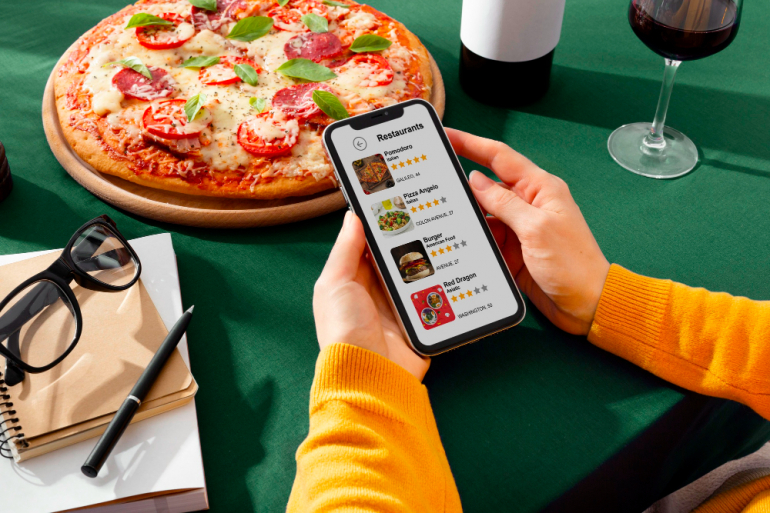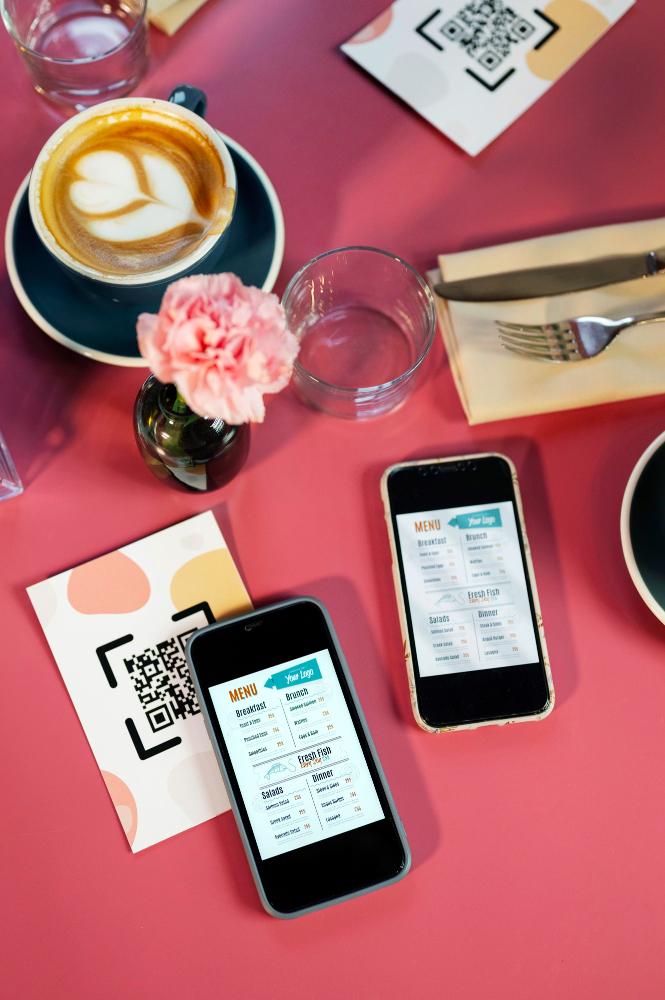The Future of Dining: How Mobile Apps and Smart Furniture are Revolutionizing the Restaurant Industry
The dining experience has always been an important element of our social and cultural lives. Traditionally, it entails physically visiting a restaurant, perusing the menu, and engaging with the waitstaff. However, as technology progresses, the restaurant business is experiencing substantial shifts. Mobile apps and smart furniture are at the vanguard of this transition, providing new levels of convenience, efficiency, and enjoyment for both customers and restaurant operators.
In today's fast-paced world, clients want ease and innovation. They prefer to make reservations on the fly, pre-order meals, and have tailored dining experiences. To stay competitive, restaurants must implement new technology that matches customer expectations and streamline operations. This article looks at how mobile apps and smart restaurant furniture is transforming the restaurant sector by increasing customer involvement, operational efficiency, and overall eating experiences.
The Role of Mobile Apps in Modern Dining
Convenience and Efficiency
Mobile apps have changed the way we connect with eateries. Online reservations, employee monitoring, and table management systems enable clients to book a table with a few taps on their cell phones. Pre-ordering and payment options allow customers to order and pay for their meals in advance, minimizing wait times and increasing convenience. These apps use data analytics to personalize client experiences, proposing foods based on previous orders and tastes.
Apps link with navigation systems, making it easier for customers to find eateries. They also provide mobile notifications with reservation confirmations and updates. QR code menus offer a contactless ordering experience, which is vital in today's health-conscious atmosphere. Push alerts notify users to unique bargains and events, which improves their dining experience. Group eating applications make it easier to divide expenditures and place group orders, making outings more fun.
Enhanced Customer Engagement
Mobile apps are extremely effective tools for increasing client engagement. Loyalty schemes and personalized offers stimulate repeat visits. Customers may share their experiences in real-time through feedback and reviews, which helps eateries improve. Integration with social media increases marketing efforts and allows customers to share their eating experiences online.
Gamification aspects in applications make meals more engaging and enjoyable, while virtual customer service representatives provide fast assistance and information. Polls and contests are interactive features that further engage users. Apps can make personalized meal recommendations based on previous behavior, making each visit feel unique. Customers can add images and reviews through user-generated content-sharing tools, creating a sense of community around the restaurant.
Operational Benefits for Restaurants
For restaurant owners, mobile apps provide several operational advantages. Inventory management improves efficiency, decreasing waste and ensuring popular commodities are constantly available. Employee scheduling and task management are streamlined, resulting in improved team coordination. Data-driven decision-making enables restaurants to optimize menus and services based on consumer preferences and feedback.
Reduced wait times and quick table turnover improve customer happiness and income. Improved customer retention numbers help restaurants identify what keeps customers coming back. Enhanced security features assure secure transactions, which builds consumer trust. Real-time digital menu changes enable flexibility in offerings. Integration with delivery and takeaway services broadens a restaurant's reach, attracting consumers who want to dine at home.
The Emergence of Smart Furniture
Innovations in Restaurant Furniture
Smart furniture is another innovation that is transforming the restaurant industry. Interactive tables with built-in screens provide a unique way to browse menus, place orders, and play games while waiting. Smart chairs and booths with customizable settings enhance every diner's comfort. Environmental control elements such as adjustable lighting, temperature, and sound offer the ideal dining environment.
Embedded charging stations keep gadgets charged and connected. Smart tables with touch-screen ordering make the ordering procedure easier. Mood lighting that is coordinated with dining phases improves the whole experience. Smart glass can offer seclusion and ambiance on demand. Diners who value the environment will appreciate eco-friendly materials with built-in sustainability features.
Improving the Dining Experience
Smart furniture greatly enhances the dining experience. Customizable eating spaces can be tailored for a variety of purposes, including romantic dinners and business meetings. Enhanced accessibility features ensure that all guests, including those with impairments, can enjoy their meals in comfort. Interactive menus and entertainment options keep guests interested.
Multi-sensory dining experiences, which incorporate aspects such as sound and pictures, make meals more memorable. Augmented reality elements can help guests learn about ingredients and cooking procedures. Young customers are captivated by interactive aspects that are appropriate for children. Special events can be made more intimate and unique by creating personalized dining areas. Health monitoring capabilities built into dining furniture offer significant insights to health-conscious customers.
Operational Efficiency and Sustainability
Smart furniture improves operational efficiency and sustainability. Energy-efficient appliances and furniture save money and lessen their environmental impact. Automated cleaning and maintenance technologies keep the restaurant clean with little human interaction. Precise resource management eliminates waste and increases operational sustainability.
Water-saving smart dishwashing stations reduce water usage. Predictive maintenance warnings help to prevent unexpected problems. Real-time energy consumption monitoring enables improved resource management. Restaurants become more environmentally friendly by integrating renewable energy sources. Smart technologies aid in recycling and composting, thus lowering the environmental imprint.
Integration of Mobile Apps and Smart Furniture
Seamless Customer Experience
The combination of mobile apps and smart furniture creates a seamless customer experience. Unified systems enable ordering, payment, and entertainment all in one spot. Real-time updates and communication with employees provide a smooth service. Augmented reality menus offer a more immersive eating experience, while voice-activated ordering systems enhance ease.
Personalized meal suggestions based on app data improve the dining experience. The synchronization of music and ambient with dining preferences provides an ideal mood. Automated allergy and dietary restriction notifications offer a safe dining experience for everybody. Digital receipts and loyalty point monitoring make transactions and rewards easier.
Streamlined Restaurant Operations
Integration also improves restaurant operations. Coordination between the kitchen, personnel, and customers is improved, resulting in more efficient service. Automated order processing and delivery within the restaurant improves service times. Data synchronization enhances resource allocation by ensuring that the appropriate amount of food and staff are available.
Improved staff communication via mobile devices keeps everyone on the same page. Smart inventory management combined with real-time sales data lowers waste and optimizes stock management. Predictive analytics aids in forecasting demand, and optimizing food preparation, and personnel numbers. Enhanced training tools offered through apps ensure that employees are well-prepared to adopt new technology. Reduced human error in order processing increases accuracy and customer happiness.
Mobile apps revolutionize restaurant operations, introducing efficiencies while streamlining various backend processes crucial for smooth functioning. One example often overlooked is database schema management, a critical aspect ensuring that all the digital services work in harmony without data inconsistencies or broken references causing disruptions during peak dining times. Effective schema management strategies can contribute safely to technological integrations with systems like interactive menus and employee scheduling apps.
Challenges and Solutions
Despite the benefits, integrating mobile apps and smart furniture presents obstacles. Data privacy and security issues must be addressed in order to protect client information. Some establishments may find the high initial expenditure and continuous technology upkeep too much. Training employees to adapt to new technologies takes time and resources.
Managing consumer expectations and technology acceptance is critical to a successful shift. Ensuring technological dependability and uptime is critical for providing consistent service. To maintain consumer trust, potential technical issues and downtime must be addressed as soon as possible. Balancing technological integration with the human touch makes the eating experience more personal. Creating contingency plans for technical problems ensures that activities run smoothly.
Summary: The Path Forward
Finally, the combination of mobile apps and commercial smart restaurant furniture is transforming the restaurant sector, providing unprecedented ease, efficiency, and satisfaction during dining encounters. As technology advances, the future of eating appears optimistic, with ongoing advancements improving both consumer satisfaction and operational efficiency.
Restaurants must embrace technological developments to remain competitive and fulfill changing consumer expectations. Investing in technology not only enhances the dining experience, but it also simplifies operations and increases sustainability. While there are challenges, resolving them with appropriate solutions will enable a smooth transition to the new era of dining.
Consumer expectations are changing, and technology plays a vital role in improving culinary creativity. Restaurants can provide memorable and distinctive dining experiences by striking a balance between technology and hospitality. Embracing innovation is critical to the future of dining, opening the way for a more efficient, pleasurable, and sustainable restaurant sector.
Copyright © . All Rights Reserved

